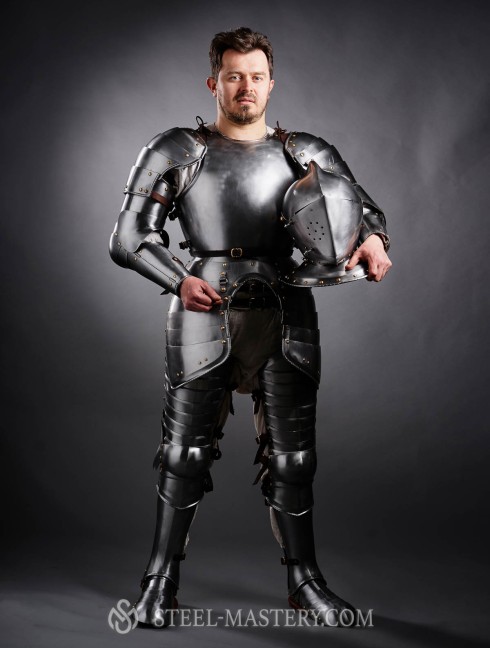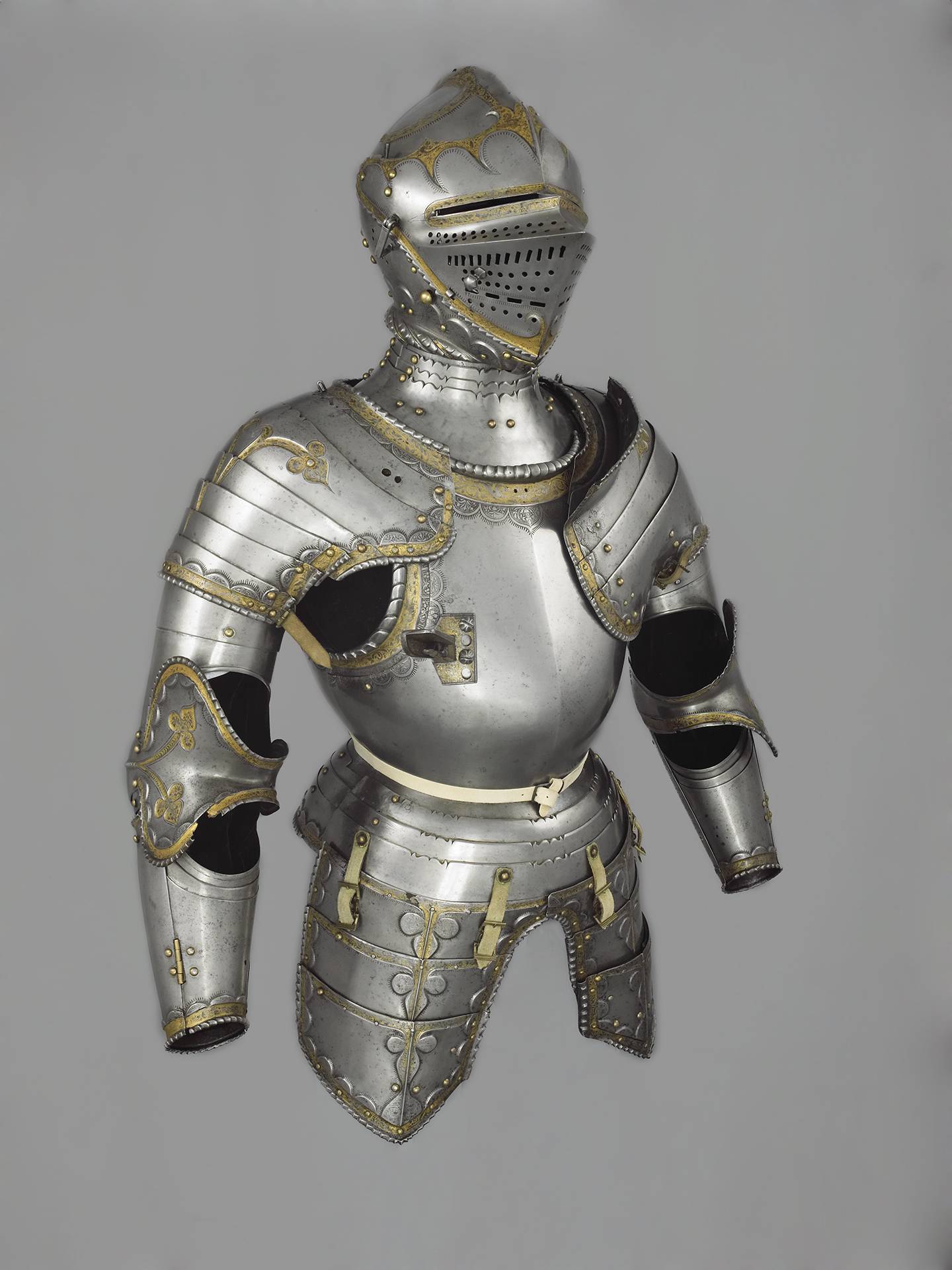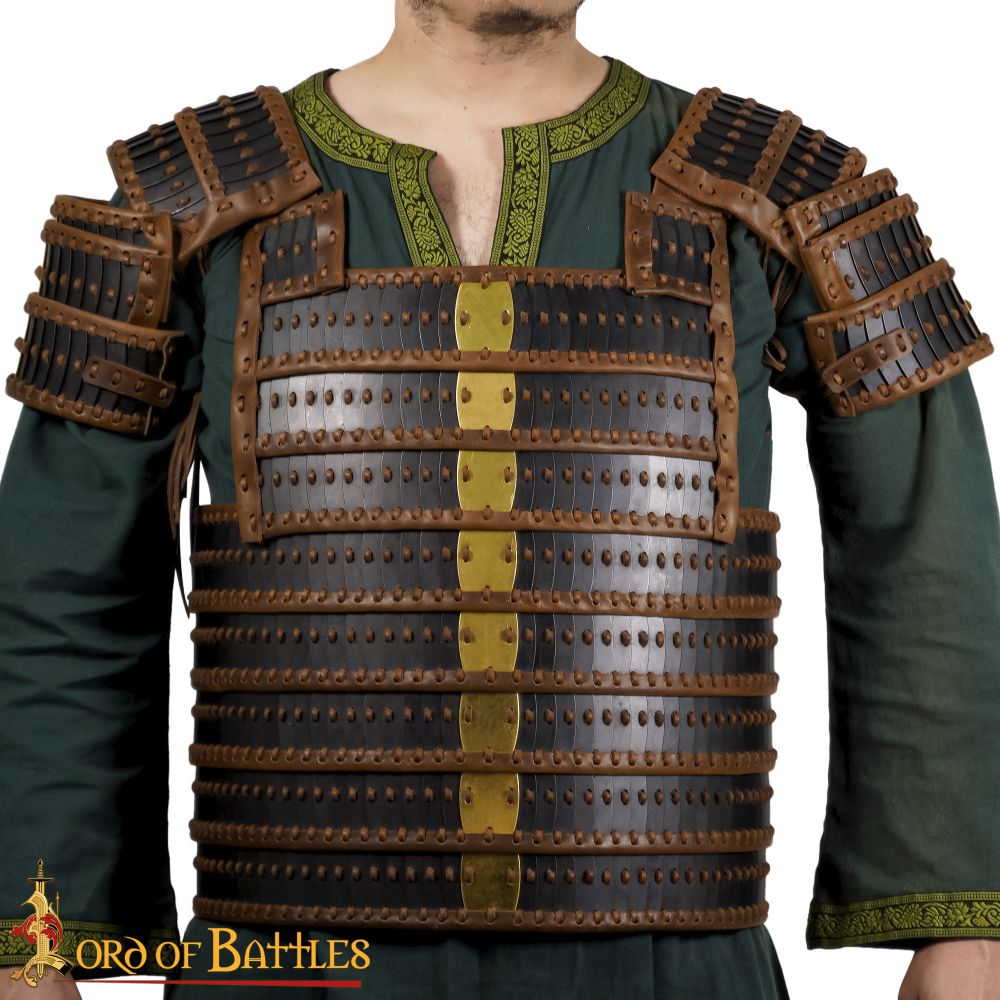
Lamellar Scale Plate Armour. Byzantium, Russia and Viking historical
Lamellar is made from hundreds of small metal plates laced into horizontal rows with successive rows laced together. This lamellar is oil blackened to help prevent rust and features brass accents down the center of the chest. The armour also has shoulders which articulate well and tie under the arm for a secure fit. Lamellar originated in Asia and spread to Eastern Europe, Russia and Byzantium. Viking traders carried Lamellar to Scandanvia from trade with Byzantium and Russia. Archeological evidence for Viking use of lamellar amour has been found at Gotland and Birka in Sweden which was estimated to have been made in the 10th and 11th century. Numerous Rus finds have also been located at Gnezdovo and Novgorod estimated to have been made during the 10th to 13th centuryThis lamellar amour is most suitable for re-enactment SCA or LARP
Armor description Armor replica, made based on archaeological artifacts excavated by archaeologists a long time ago from Donetsk / kharkiv region. The
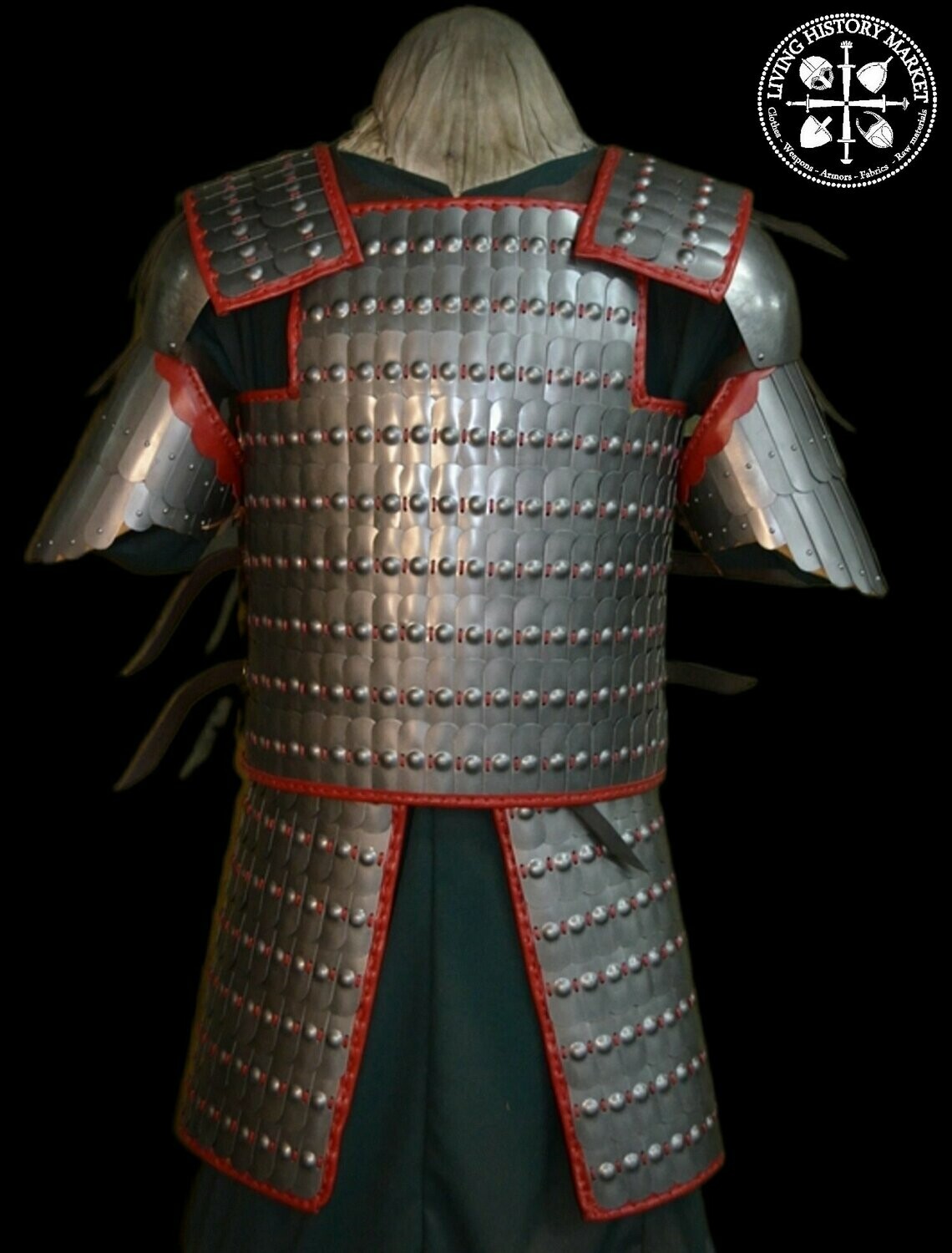
Donetsk armor, - Khazar / Kievan Rus - 9/10 century

Lamellar Scale Plate Armour. Byzantium, Russia and Viking
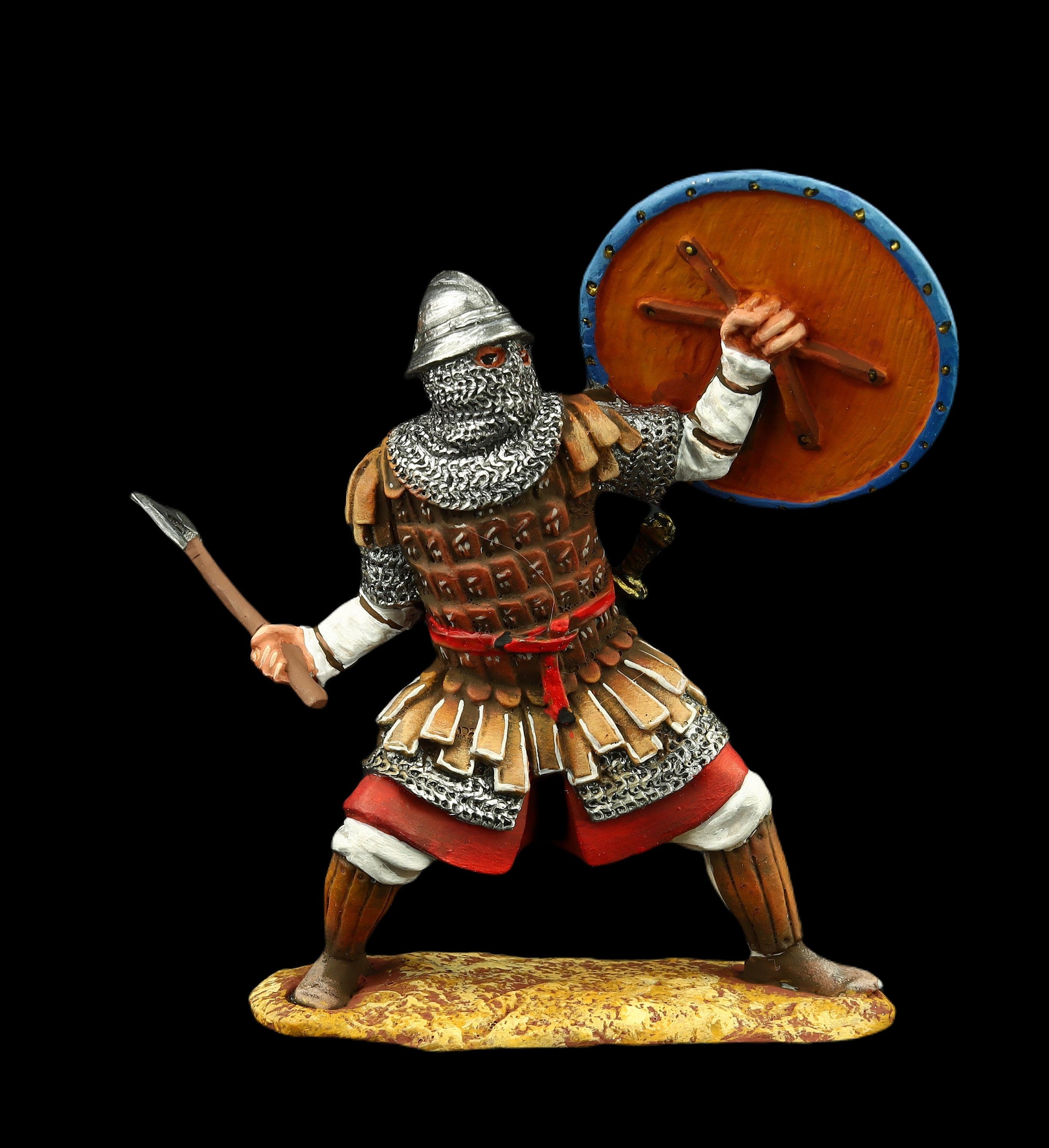
Varangian Armor - Sweden

Byzantine lamellar klibanion (modern reconstruction). The

The Emergence and Development of Plate Armor from the Medieval
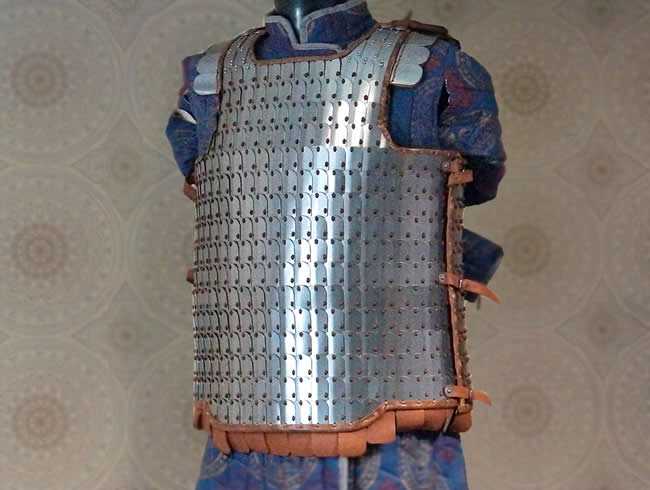
Armour Byzantine #1. X-XII A.D. - TRUE HISTORY SHOP

Reconstruction armor warriors Russia 14th century. Researchgroup
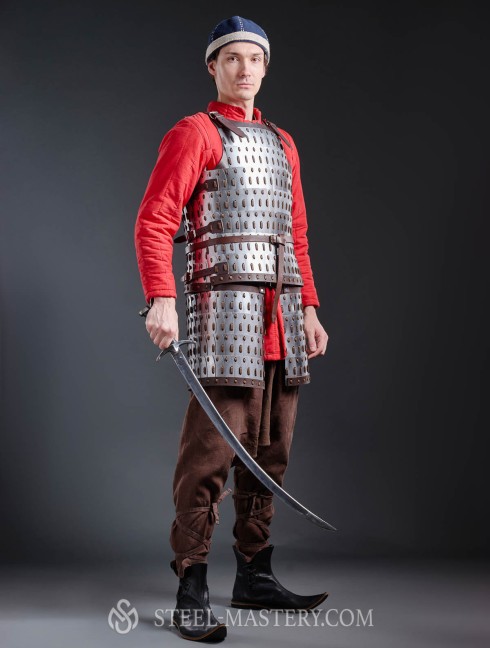
Lamellar armor
What did armor from the Middle East and Eastern Europe look like
How did Roman and Byzantine armor differ? - Quora
In lamellar armor, what determines the number of holes in each

Long Lamellar Scale Armor, Scythian Sarmatian. Ancient Armor

Figured lamellar scales of VI-VII century AD. - TRUE HISTORY SHOP

